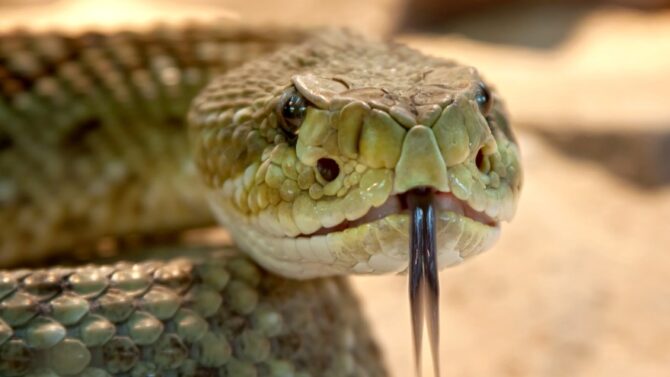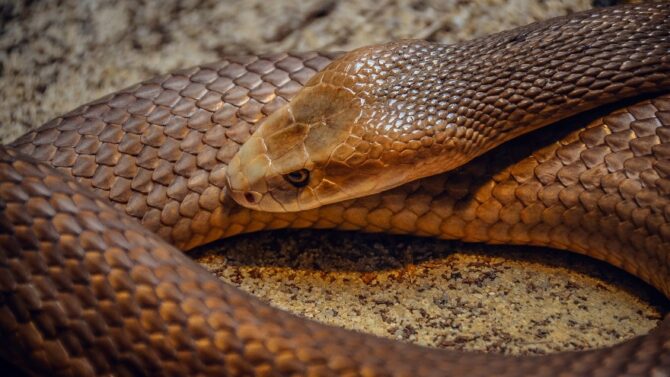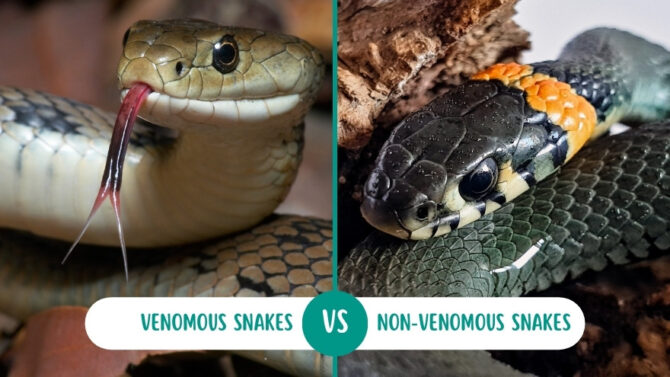Snakes have their quirks, some of which can be downright scary. One such quirk is the ability to stand erect.
Few people would want to be around a snake when it adopts this position, especially if it’s accompanied by a hiss or growl.
These reptiles don’t stand only to attack, though. They also do this to explore. Terrestrial snakes are common culprits.
Some examples of snakes that stand upright include pythons, black mambas, cobras, and the eastern brown snake. All are terrestrial and have their unique traits, but they unite on this particular attribute.
Let’s unpack the different species of snakes that can stand erect.
Snakes That Stand Upright
Cobra
Scientific Name: Naja
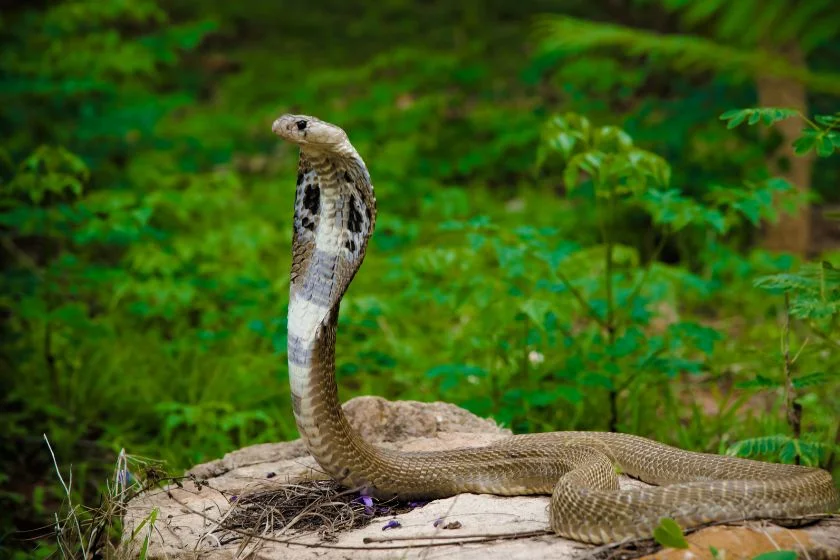
Who hasn’t heard of a cobra? Its gorgeousness is accompanied by deadliness, and the cobra is one snake people would love to see yet prefer avoiding.
They’re very venomous, which contributes to their notoriety. Cobras can be found in both Africa and Asia.
A cobra standing upright is both elegant and ferocious, and it does this when threatened.
Rest assured that it is likely to bite once it adopts this position. It can raise its body to a third of its entire length.
It also stands to get a good view when looking for food.
Black Mamba
Scientific Name: Dendroaspis polylepis
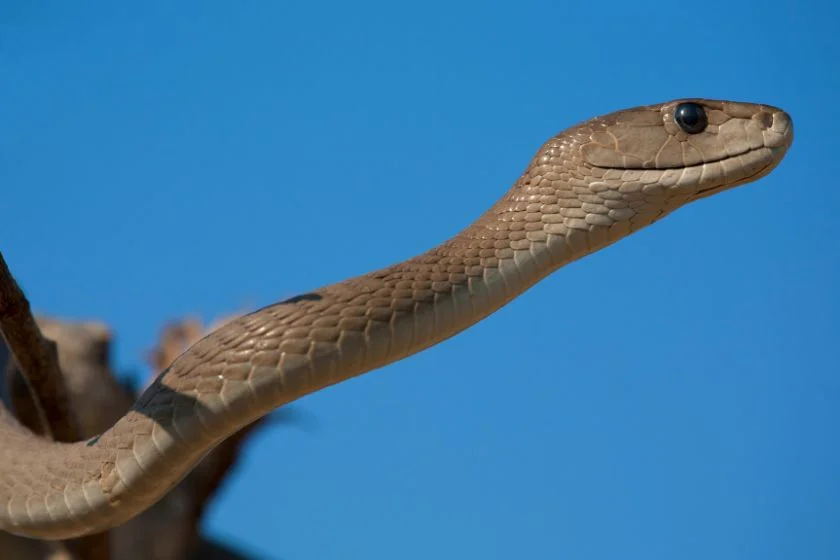
The black mamba isn’t anything like the ball python. Far from being harmless, this snake is considered the deadliest in Africa. 1
Its size, speed, and venom make it a force to reckon with. It is the second biggest venomous snake after the king cobra, plus it records as one of the fastest.
Black mambas stand upright when they feel threatened, and they intend to scare away the threat.
They can raise a third of their bodies, and because they’re big it’s hard not to notice. This is usually accompanied by a hiss, flapping of the neck, and an opened mouth.
Carpet Python
Scientific Name: Morelia spilota
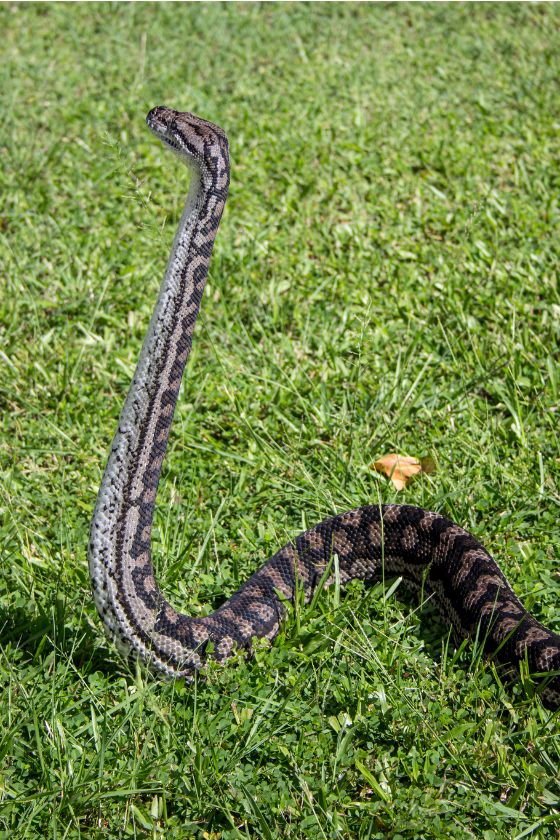
As the name implies, carpet pythons have intricate designs that are beautiful to look at. It is considered a good pet because it is non-venomous and can easily be handled.
It is similar to the ball python, but not as small. There are seven carpet python types.
The most popular is the jungle variant which comes with a notable black and yellow band. Being non-venomous, carpet snakes don’t feel the need to threaten anyone.
They stand upright when they want to climb trees, which they do often as they are semi-arboreal.
They can raise to a third of their bodies, making it easy to ascend a tree or any other surface.
Rattlesnake
Scientific Name: Crotalus cerastes
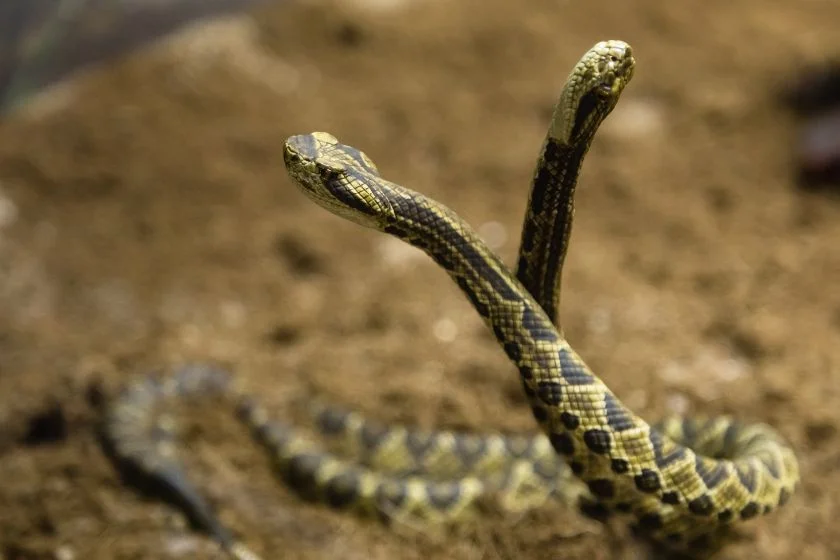
This snake is known for the rattle on the end of the tail from which it got its name.
It shakes the rattle to scare off predators and it makes a vibrating sound that can deter anyone from drawing closer.
The rattlesnake is a viper, and like its relatives, it is highly venomous. It doesn’t always bite, though.
The rattlesnake doesn’t make a habit of standing but will do so if its tail isn’t enough to stop a predator from approaching. It can raise to half its length and may strike if the threat persists.
King Cobra
Scientific Name: Ophiophagus hannah

The king cobra doesn’t belong to the same genus as other cobras, which is why we list it as an animal of its own.
While cobras are under the Naja genus, the king cobra is classified under the Ophiophagus genus. Some believe it shouldn’t be termed a cobra at all, but that’s not our focus.
The king cobra is the biggest venomous snake and the most common reptile that stands upright.
The most terrifying part? It can get up to a human’s height! King cobras stand upright when threatened. They’d also glare and can attack.
Eastern Brown Snake
Scientific Name: Pseudonaja textiles
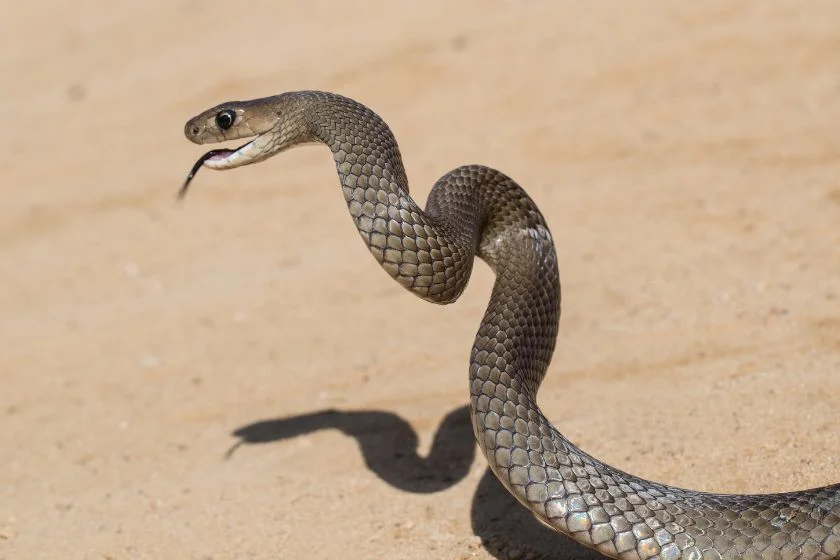
The eastern brown snake is often found in open grasslands and woodlands. It is located in different areas of Australia.
Not all snakes are colored brown. Their colors include grey, tan, a creamy or yellow belly, and dark orange spots.
They are very poisonous and a bringer of death. Fortunately, they are also scared of humans and would often flee.
The eastern tree snake is an aggressive fighter, and trouble awaits any animal that tries to hunt it down. It also does the same to prey, even large ones. This is when it rises to strike.
Green Tree Snake
Scientific Name: Morelia viridis
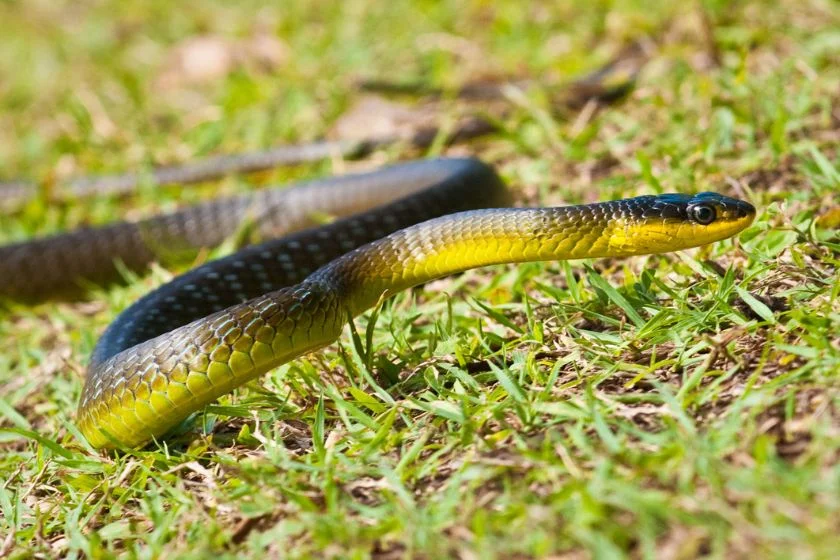
The green tree snake’s name is a bit of a misnomer as not all individuals are green. They can be brown, black, blue, olive green, and even a combination of yellow a light blue.
As non-venomous snakes, these guys hardly bite. They tend to flee rather than fight. However, they have some tactics up their sleeves.
To scare off predators, the green tree snake stays upright. It will also make its body seem bigger, as well as its throat.
This presents a frightening picture intended to make the threat think twice.
Ball Python
Scientific Name: Python regius

First on our list is a python species, and similar to those of its kind it is non-venomous. It is also the smallest python species, which serves to make it extra harmless.
Combine both qualities and you have a good candidate for a pet snake. The reptile is endemic to Western Africa.
Ball pythons do not stand upright as a defense tactic or to threaten prey. They do it to get a good view of the surrounding.
This is known as periscope. A possible reason why they periscope is size.
Because they’re small, they have to stand over tall grasses and shrubs to explore else they won’t see.
Bonus Tip: How to Tell if a Snake is Venomous?
According to findings, there are over 600 venomous snake species on earth, with over 200 causing real damage.
It can be difficult to distinguish between a venomous snake and a non-venomous one because a lot of species look alike.
The best thing to do would be to steer clear of any slithering reptile, but if you want to know for sure, here are some indicators to help you identify poisonous snakes:
Behavior
Species behave differently, and this can let you know if a particular individual is venomous or not.
This may be difficult for someone inexperienced, but it can be a criterion. Venomous snakes tend to show aggression when threatened—though there are many exceptions.
An overt example is a rattlesnake with its rattled tail. The king cobra also does this.
Habitat
Nesting and habitat can help you know which areas to avoid when exploring particular wildlife.
For this, you’d need to do some research in advance. The king cobra is often found around streams and mangrove swamps, cottonmouths inhabit ponds and rattlesnakes sit around deserts and forests.
Head
Another trait to look at is the snake’s head. Venomous snakes have triangular-shaped skulls which a non-venomous snake doesn’t have.
This can sometimes be difficult to discover like the behavior because non-venomous snakes can make their skulls look like their venomous counterpart.
Color
Color can also distinguish a venomous snake from the non-venomous one, though this is the least productive factor.
Species have subspecies, and the colors get confusing. Snakes aren’t like frogs that can portray toxicity with a bright color.
Pupils
The final factor to use is the pupils. Venomous snakes have pupils that are similar to those of cats.
The eyeball is colored a yellowish green and the pupils are black. Of course, the risk with this is going close enough to observe. If a snake stands up and widens its pupils, it is best to stay away.
Conclusion
Snakes have different reasons for standing erect, the most common being for defense and exploration.
While not all snakes have the ability, a couple of venomous and non-venomous snakes can stretch upwards, some up to the height of a human.
References & Notes
- Black Mamba, (2012). PBS.


